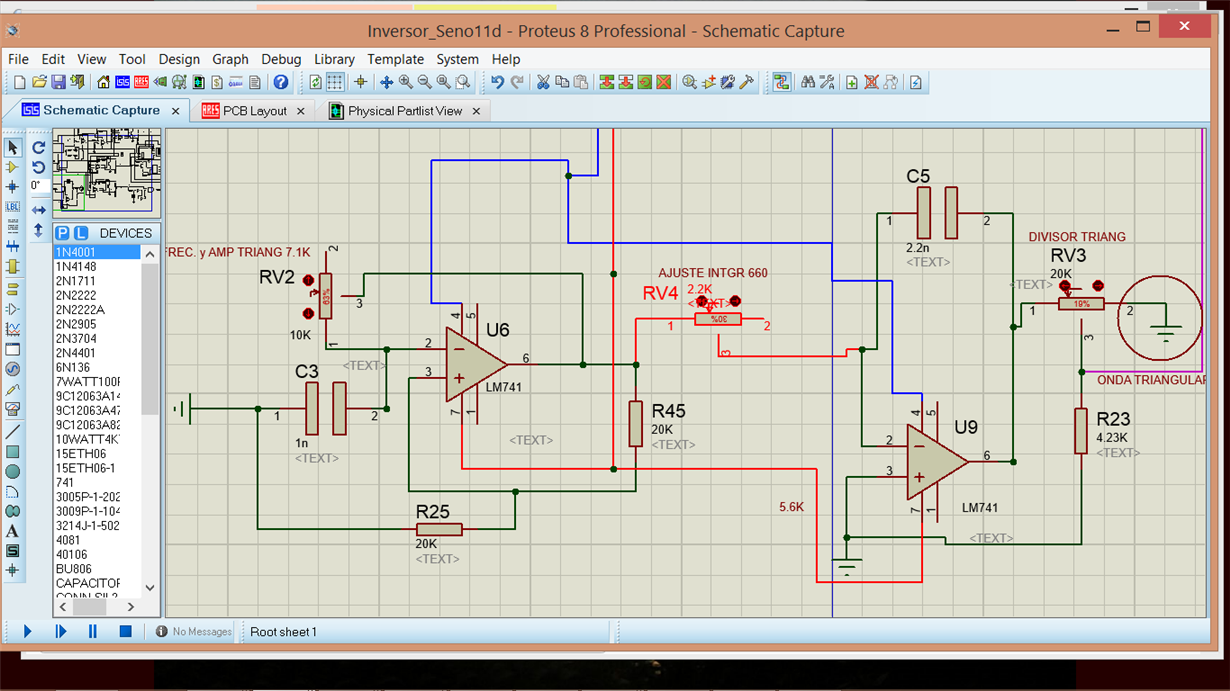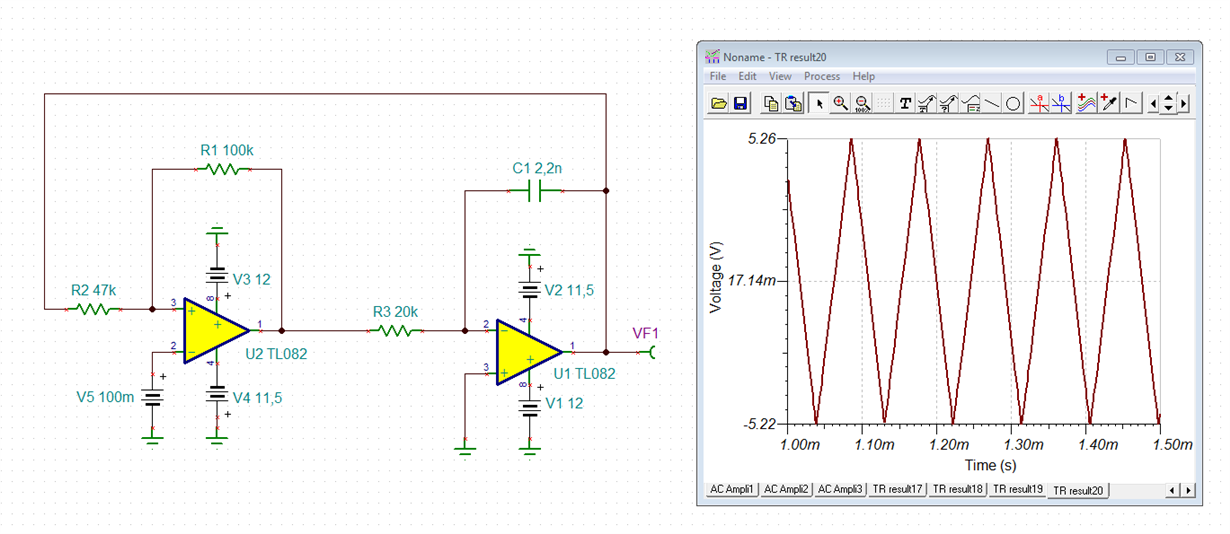Other Parts Discussed in Thread: TL082, UA741
To hom it may concern
I'm using two LM741 to make a triangle signal, but the signal is umbalanced respect zero. Positive part is 1.8 V and negative part is 2.8 V in the output of the first ampop and simmilar to the output of the second. I rode about 1,5 pins offset balance, but as I understand it is just to balance feeding. I'm using a PC's power supply where I get 12 V and -11.5 V. The feeding balance is opposite of what I'm getting. What do you suggest to do to get a balanced output (simmilar positive and negative parts of the signal) respect zero?
Thank you for your valuable time
Luis

















